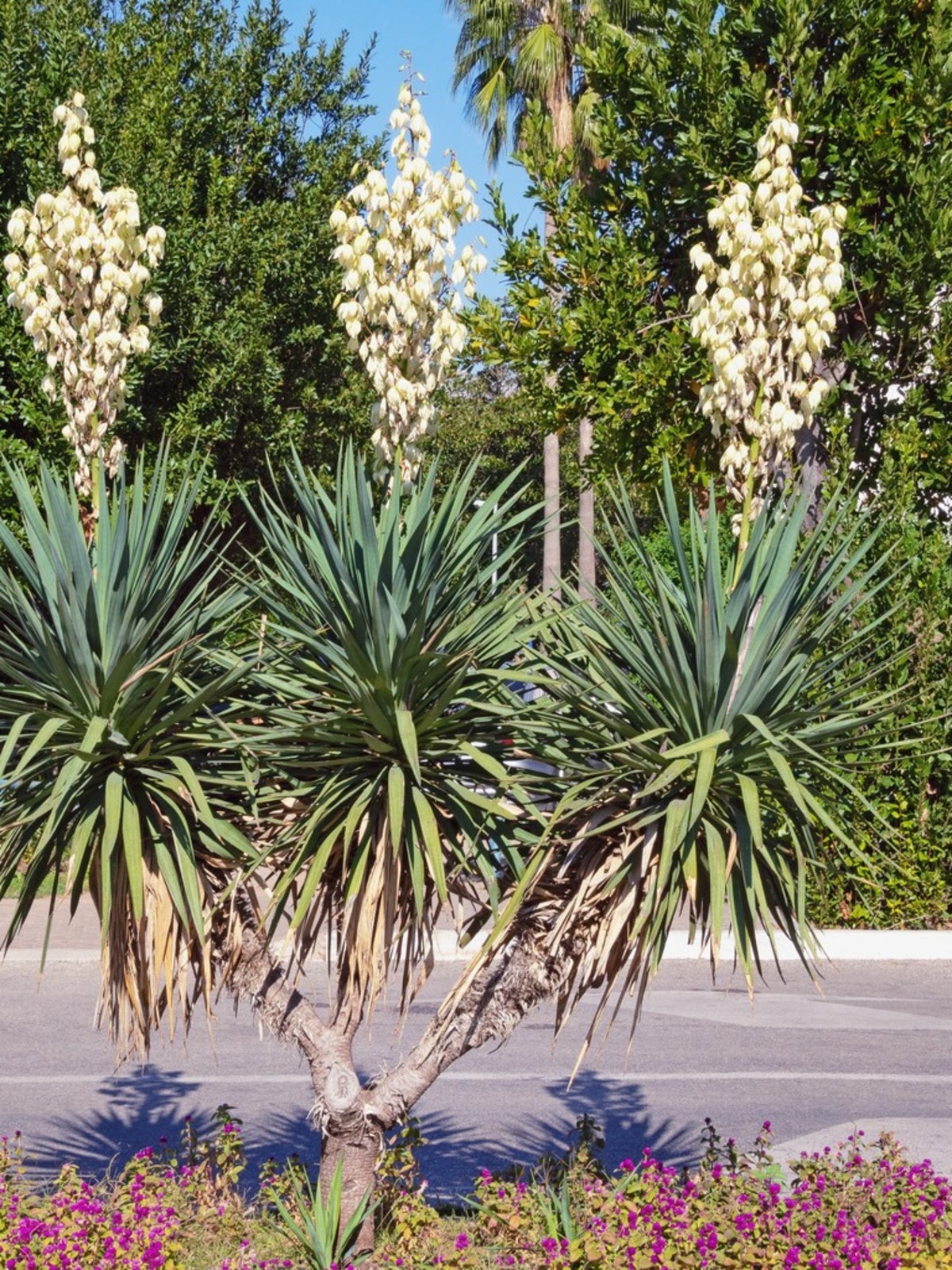What Is Beargrass Yucca : Learn About Beargrass Yucca Plants


Yucca are evergreen, perennial, arid region plants. They require plenty of sun and well-drained soil to thrive. Beargrass yucca plants (Yucca smalliana) are commonly found in sandy soil in the southeastern United States. Growing beargrass yucca in the home landscape requires similar soil and exposure. Surprisingly, the plant has naturalized in areas like Illinois, a USDA zone 4 to 5 region. For a desert plant, it has adapted to extreme cold and even occasional frost.
What is Beargrass Yucca?
Beargrass yucca looks similar to the common Adam's needle yucca. To identify beargrass yucca vs. Adam's needle, you just need to look at the leaves. Beargrass yucca has narrower leaves which are flattened and also bear a smaller flower. Yucca filamentosa, or Adam's needle, is commonly misidentified as Yucca smalliana. Each is of similar size, but their leaf and flower characteristics indicate that they are different species in the same genus. Beargrass yucca plants are unmistakable succulents with sword-like leaves. These leaves are softer than and not as dangerous as the sharp, knife-edged Adam's needle yucca foliage – it has even been termed weak-leaf yucca because of this. Individual leaves may approach 30 inches (76 cm.) in length. Leaves all rise from a central rosette. As new leaves appear, the lower older leaves dry and hang down against the stem. The beautiful flowers are born on stems which may be up to 8 feet (2.4 m) in length. Adorning this stem are the saucer-shaped flowers, dangling in panicles of iridescent creamy white. Fertilized blooms become 3-inch (8 cm.) long pods bearing large, black flat seeds.
Additional Beargrass Yucca Information
In the wild, beargrass yucca can be found growing in sand and sun locations. In areas where it has naturalized, it may be found in vacant lots, roadsides, woodlands, prairies, and open woods. In southeastern America, gardeners who are growing beargrass yucca may inadvertently spread the plant, as the seed is a speedy and ready germinator, and young plants seem to be able to get a foothold in a variety of settings. The plant can also reproduce by developing offsets or pups. This is common in the succulent group of plants. Young pups can be divided from the mother to create individual specimens. In nature, the pup often continues to grow alongside the parent, only to eclipse it when the offset is mature.
Beargrasss Yucca Care
Yuccas prefer moderate to dry conditions, full sun and well-draining soil. It is this last requirement – well-draining soil - that is crucial because boggy sights can lead to root rot and enhance fungal disease issues. Sandy soil is preferred, but these tolerant plants can also thrive in loam, clay, rocky or other types of soil as long as it drains freely. Remove spent flower stalks after blooming to help the plant channel its energy into foliar growth and prevent the spread of the yucca. Water in the morning or under the leaves to prevent the formation of black spot. Remove damaged leaves as they occur. For the most part, beargrass yucca care is minimal. This stoic plant can be planted and enjoyed without any fuss.
Gardening tips, videos, info and more delivered right to your inbox!
Sign up for the Gardening Know How newsletter today and receive a free copy of our e-book "How to Grow Delicious Tomatoes".

Bonnie Grant is a professional landscaper with a Certification in Urban Gardening. She has been gardening and writing for 15 years. A former professional chef, she has a passion for edible landscaping.
-
 Looking For Plants To Give You The Soft And Fuzzies? Try These 5 Fuzzy Leaf Plant Options
Looking For Plants To Give You The Soft And Fuzzies? Try These 5 Fuzzy Leaf Plant OptionsLovers of texture, drama, silver foliage and tactile plants will adore these special sensory garden additions. These fuzzy leaf plant options will leave you all aglow
By Susan Albert
-
 Get Ready For A Summer Of Hummers! Grow These Full Sun Hummingbird Plants and Flowers
Get Ready For A Summer Of Hummers! Grow These Full Sun Hummingbird Plants and FlowersIf you’re lucky enough to enjoy a sunny backyard, make sure you are maxing out on your pollinator opportunities and grow these full sun hummingbird plants and flowers
By Tonya Barnett